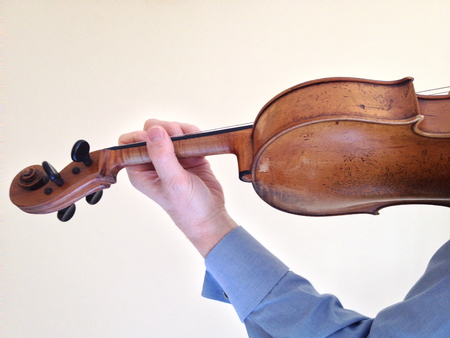Viola Dominant Seventh
A relaxed left hand in 1st pos. Thumb & fingers must never be squeezed
The sound of the dominant 7th chord or scale, permeates many classical, romantic, sonatas and concertos. The notes of the dominant seventh chord are employed in many works for the viola and the rest of the string family.
A dominant seventh chord or scale, is a requirement for graded exams and is made up of the root, major third, perfect fifth and the flattened seventh. In the key of D the notes would be A, C#, E & G. The dominant of D, being A, as the root note.
For practice purposes it is important to totally familiarise the ear with the tonality of this scale
Because their corresponding finger patterns are used so frequently, they must be thoroughly assimilated in all keys.
This scale can be found throughout each section of the Crabbers Scale Manuals.
When the student is not so familiar with this type of scale, it is advisable to begin practising with the lower scales i.e. C as the root first. For future reference the finger patterns remain the same from E-B inclusive. (All beginning with 2nd finger on the C string)
The notes of the dominant 7th chord should be practised in conjunction with all the other scales. The dominant seventh chord is a happier sounding key which allows the ear to assimilate the scale more readily than perhaps the diminished triads.
It is crucial that the violist be taught how to practice scales
Only by regular work using the scale chart on page 169 will varying methods emerge. Working through this website will give an insight into ways of practising correctly.
It cannot be stressed enough that the practice of scales and arpeggios is essential for a healthy technique.


Crabbers Alternative Scale Manuals
Violin
A comprehensive guide for the advanced student & conservatoire undergraduate
ViewViola
A comprehensive guide for the advanced student & conservatoire undergraduate
ViewCello
A comprehensive guide for the advanced student & conservatoire undergraduate
View